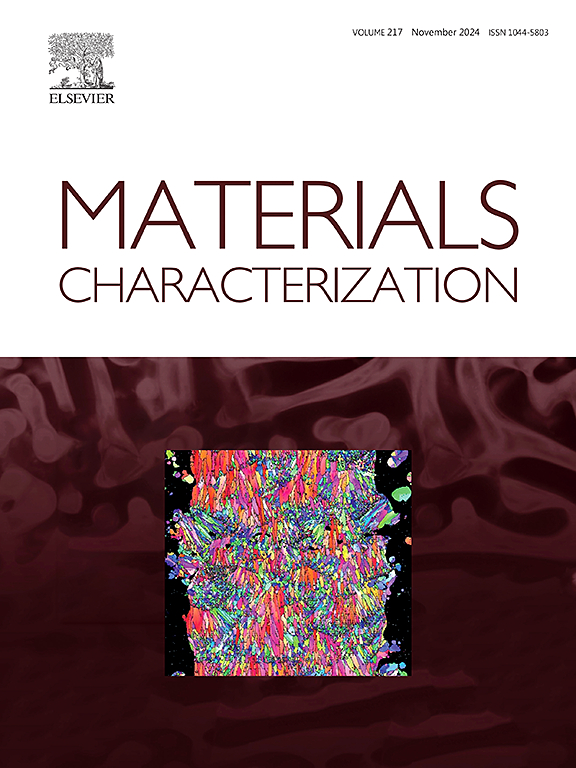Effect of pre-aging on the microstructure and properties evolution of cold-rolled Cu-Ni-Co-Si during final aging
IF 4.8
2区 材料科学
Q1 MATERIALS SCIENCE, CHARACTERIZATION & TESTING
引用次数: 0
Abstract
Thermomechanical treatment plays a crucial role in microstructure regulation and properties optimization of precipitation-hardening Cu alloys. In this study, the influence of pre-aging on the microstructure and properties evolution of cold-rolled Cu-1.2Ni-0.9Co-0.5Si alloy during final aging has been systematically investigated. The results demonstrated that pre-aging induced an increase in dislocation density and facilitated the precipitation of fine precipitates, thereby resulting in a simultaneous enhancement of both strength and electrical conductivity. The Cu-1.2Ni-0.9Co-0.5Si alloy treated by pre-aging at 500 °C for 1 h exhibits a tensile strength of 791.5 MPa and an electrical conductivity of 45.3 % IACS, which are both superior to the counterparts of the alloys without pre-aging treatment (755.5 MPa and 42.2 % IACS). However, as aging proceeded, the pre-aging treated alloy exhibited an accelerated decline in dislocation density due to enhanced recrystallization and a more pronounced tendency for precipitation growth compared to the untreated alloy. Consequently, the pre-aging treated alloy showed a more conspicuous softening phenomenon and resultant lower strength level during over-aging period than the untreated one.
求助全文
约1分钟内获得全文
求助全文
来源期刊

Materials Characterization
工程技术-材料科学:表征与测试
CiteScore
7.60
自引率
8.50%
发文量
746
审稿时长
36 days
期刊介绍:
Materials Characterization features original articles and state-of-the-art reviews on theoretical and practical aspects of the structure and behaviour of materials.
The Journal focuses on all characterization techniques, including all forms of microscopy (light, electron, acoustic, etc.,) and analysis (especially microanalysis and surface analytical techniques). Developments in both this wide range of techniques and their application to the quantification of the microstructure of materials are essential facets of the Journal.
The Journal provides the Materials Scientist/Engineer with up-to-date information on many types of materials with an underlying theme of explaining the behavior of materials using novel approaches. Materials covered by the journal include:
Metals & Alloys
Ceramics
Nanomaterials
Biomedical materials
Optical materials
Composites
Natural Materials.
 求助内容:
求助内容: 应助结果提醒方式:
应助结果提醒方式:


